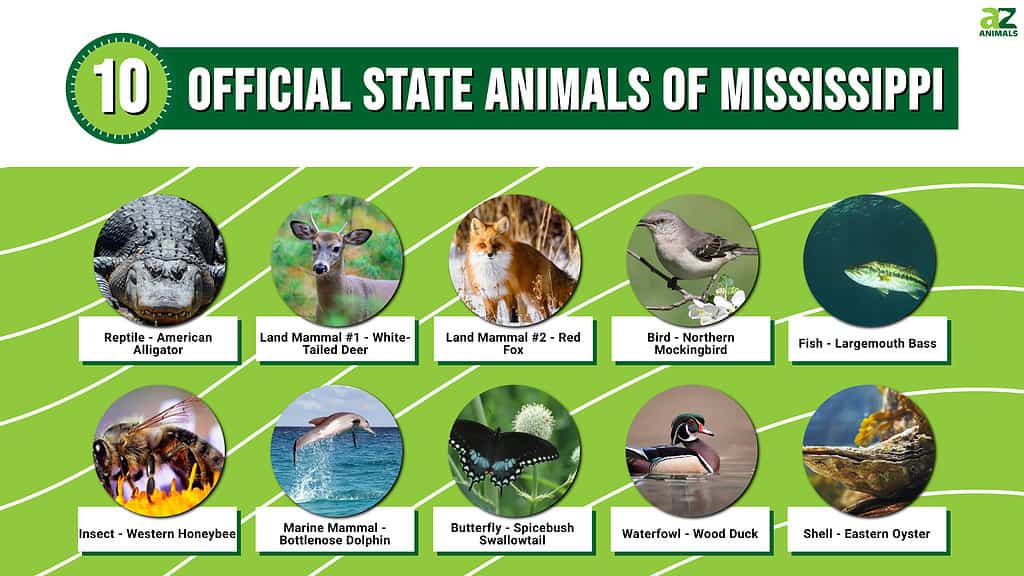
Mississippi is known for its rich history, vibrant culture, and breathtaking natural beauty. The state has an interesting collection of official state symbols, including state animals. These animals represent the unique character and diversity of the state. They have been chosen with great care to reflect the values and heritage of Mississippi.
These 10 official state animals embody the spirit of Mississippi and offer a fascinating glimpse into its natural history.
Reptile – American Alligator
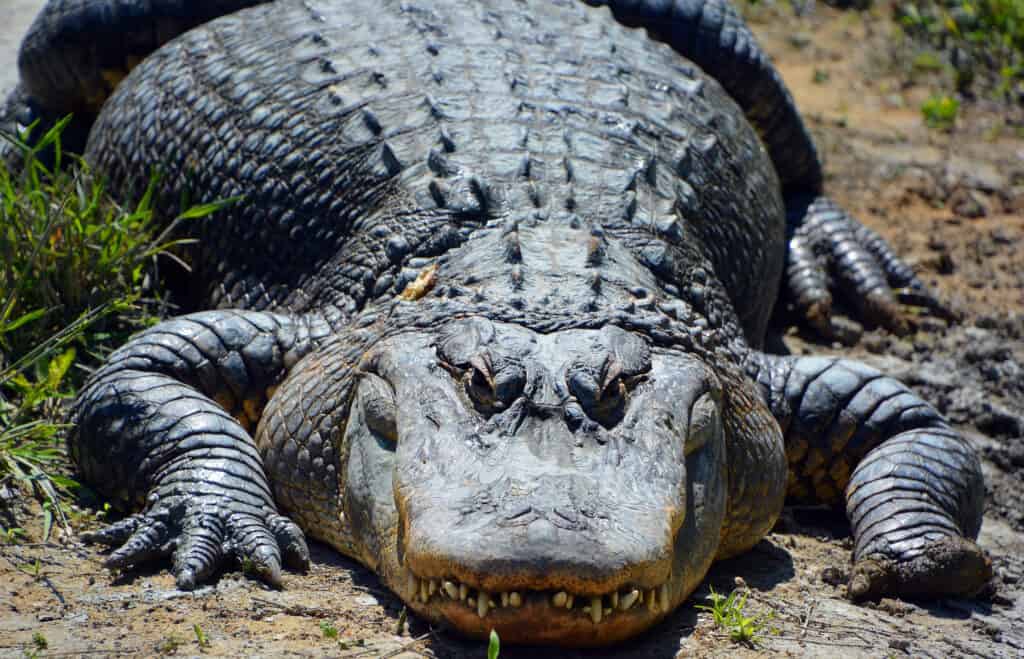
These reptiles possess powerful, compact legs and a distinct, rounded snout that adds to their intimidating appearance.
©meunierd/Shutterstock.com
The Mississippi state reptile is none other than the American alligator (Alligator mississippiensis). It is known commonly as the gator or common alligator. The American alligator was officially designated as the state reptile in 2005 because of its historical and ecological significance. American alligators are native to Mississippi and have been a part of the state’s ecosystem for thousands of years.
Appearance
The American alligator boasts a stout and robust physique, with a body covered in bony plates. These plates are referred to as scutes or osteoderms and provide protection. In addition, these reptiles possess powerful, compact legs and a distinct, rounded snout that adds to their intimidating appearance.
The hue of an adult’s skin can range from olive, brown, and gray to almost black. Their underbelly is a lighter shade. They can reach up to 14 feet in length.
Behavior
Alligators are highly efficient predators and are primarily active during nighttime hours. During the day, they can be spotted in groups at the water’s edge, basking in the sun. As the night approaches, they retreat to the water and lead a solitary life, each one staking claim to its own territory.
Characteristics
The American alligator is a voracious eater with a varied diet of fish, small mammals, and birds. However, they have been known to attack much larger animals, including deer. Additionally, they will not hesitate to take down smaller alligators.
Their size and power put them at the top of the food chain. Some larger alligators even hunt Florida panthers and black bears.
Interesting Facts
- Alligators may attack humans if they feel threatened, although they’re more likely to attack pets.
- The estimated population of alligators in Mississippi is between 32,000 and 38,000.
- Alligators have a lifespan of about 50 years on average.
Land Mammal #1 – White-Tailed Deer
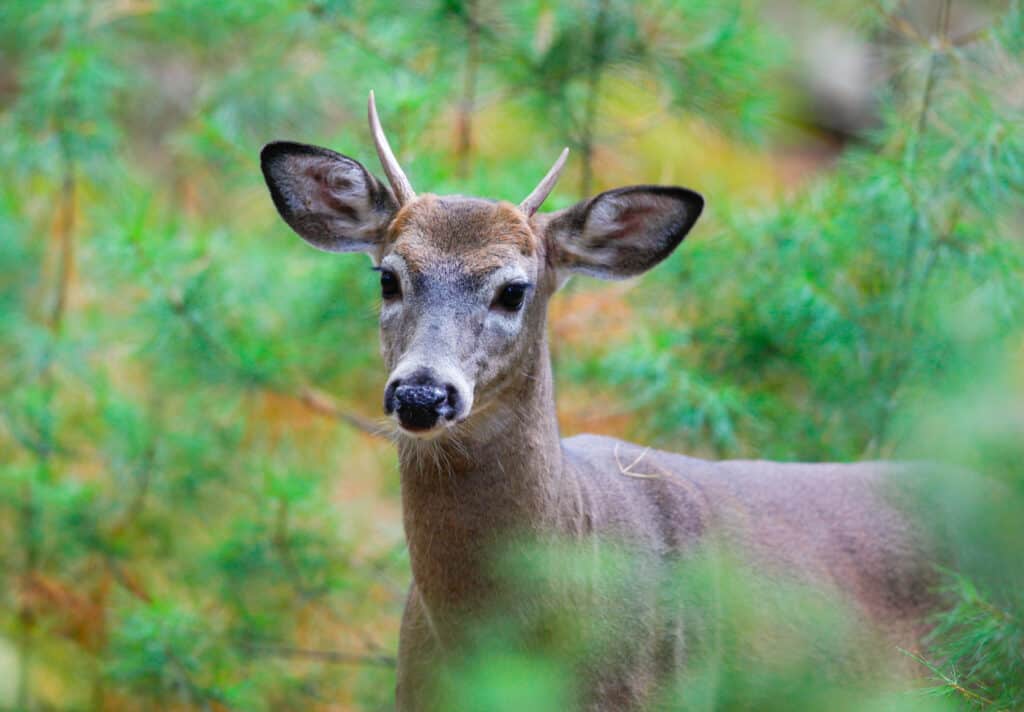
The term “spike” refers to bucks (male deer) with antlers that do not branch.
©iStock.com/Louise Wightman
The white-tailed deer, scientifically known as Odocoileus virginianus, is officially recognized as one of the state mammals of Mississippi. The white-tailed deer symbolizes a unique combination of grace and power. This majestic creature embodies peace, strength, fertility, prosperity, and energy. It is a fitting representation of the state’s spirit. Its elegance and popularity make it an ideal choice as the state’s official land mammal. The state granted white-tailed deer this distinction in 1974.
Appearance
White-tailed deer change colors seasonally. They have a tan or brown hue in the warmer months while taking on a grayish-brown tint in the colder months. They have white fur on their throat, eye, and nose regions, belly, and bottom of their signature white tail. It’s easy to distinguish males from females, as the males have antlers.
Behavior
The white-tailed deer have exceptional senses of hearing and sight, which serve as their defense against potential predators. These creatures are primarily active during the twilight, searching for food before disappearing at daybreak.
Their agility and speed are due to their long legs, which allow them to run at impressive speeds and jump to great heights.
Characteristics
The maternal instincts of females are strong, with fierce protectiveness over their young, known as fawns. The mother will leave her fawns in a safe place for up to four hours while she looks for food.
During this time, the fawns remain motionless, blending into their surroundings with their necks extended flat against the ground. This provides excellent camouflage and helps to keep the fawns hidden from predators.
Interesting Facts
- The most prevalent deer species in North America is the white-tailed deer.
- In captivity, white-tailed deer live up to three times longer than wild white-tailed deer.
- The hunting industry in the United States largely focuses on white-tailed deer populations.
Land Mammal #2 – Red Fox
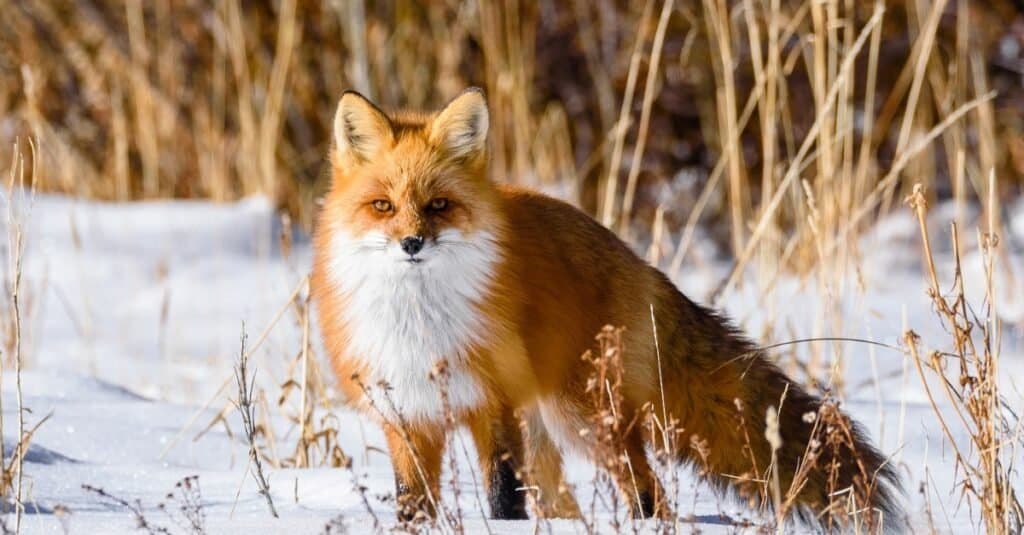
The red fox boasts a distinctive reddish fur coat with black-colored legs and ears.
©iStock.com/Hawk Buckman
The majestic red fox (Vulpes vulpes) is the largest among all true fox species. The state designated the red fox as the second state mammal in 1997. The state sought to recognize its long history in the region. It is an iconic symbol of the state and is also a significant predator of small mammals, birds, and reptiles. It helps maintain a healthy balance in the state’s ecosystem.
Appearance
The red fox boasts a distinctive reddish fur coat with black-colored legs and ears. Its long and fluffy tail has a white tip. In addition, this species of fox has an elongated muzzle, sharp-pointed ears, and a white belly.
On average, the red fox is between 22 to 32 inches in length, including the head and body. The tail can measure between 14 to 16 inches.
Behavior
Red foxes belong to the Canidae family, which encompasses dogs. Interestingly, they exhibit behaviors similar to that of cats. They stalk and pounce their prey, run sideways, and walk on their toes.
Characteristics
The red fox is a solitary predator that primarily feeds on small prey such as rodents, rabbits, and birds. Their diet is highly adaptable and flexible, reflecting their versatile habitat. These foxes are not picky eaters and will consume a wide variety of food, including fruits, fish, and worms.
Interesting Facts
- Female red foxes are referred to as vixens.
- Red foxes have a remarkable sense of hearing.
- Red foxes are monogamous, typically spending their entire lives with one mate.
Bird – Northern Mockingbird

Mockingbirds are famous for their remarkable ability to imitate a wide range of sounds, including sirens, crickets, and other bird species.
©Steve Byland/Shutterstock.com
The northern mockingbird, scientifically named Mimus polyglottos, is abundant in the southeastern region of the United States, particularly in Mississippi. Due to its conspicuous behavior, vocal abilities, and affinity for human-populated areas, Mississippi selected this species as the official state bird in 1944.
Appearance
Northern mockingbirds have distinctive gray-brown plumage, which is lighter in color on their chest and belly. They have a unique appearance, with two prominent white wing bars. Observers can spot these markings when the bird is sitting. However, when these birds are in flight, the white wing patches become highly visible, creating a striking contrast against their dark feathers.
Northern mockingbirds measure anywhere from 8 to 11 inches long, including a tail that is nearly as long as their body.
Behavior
The northern mockingbird displays territorial behavior and aggression, especially during the breeding season. They defend their territory from other birds, with females often challenging other females and males confronting male intruders.
Characteristics
The northern mockingbird is famous for its remarkable ability to imitate a wide range of sounds, including sirens, crickets, and other bird species. In addition to mimicking different sounds, northern mockingbirds also have distinctive songs unique to their species.
Interesting Facts
- The northern mockingbird has a vast repertoire of songs, often exceeding 200 tunes.
- This species is fiercely territorial and known to defend its nests by swooping and diving at any perceived threat, including humans.
- The typical lifespan of a northern mockingbird in the wild is up to eight years, but some captive birds have lived up to 20 years.
Fish – Largemouth Bass
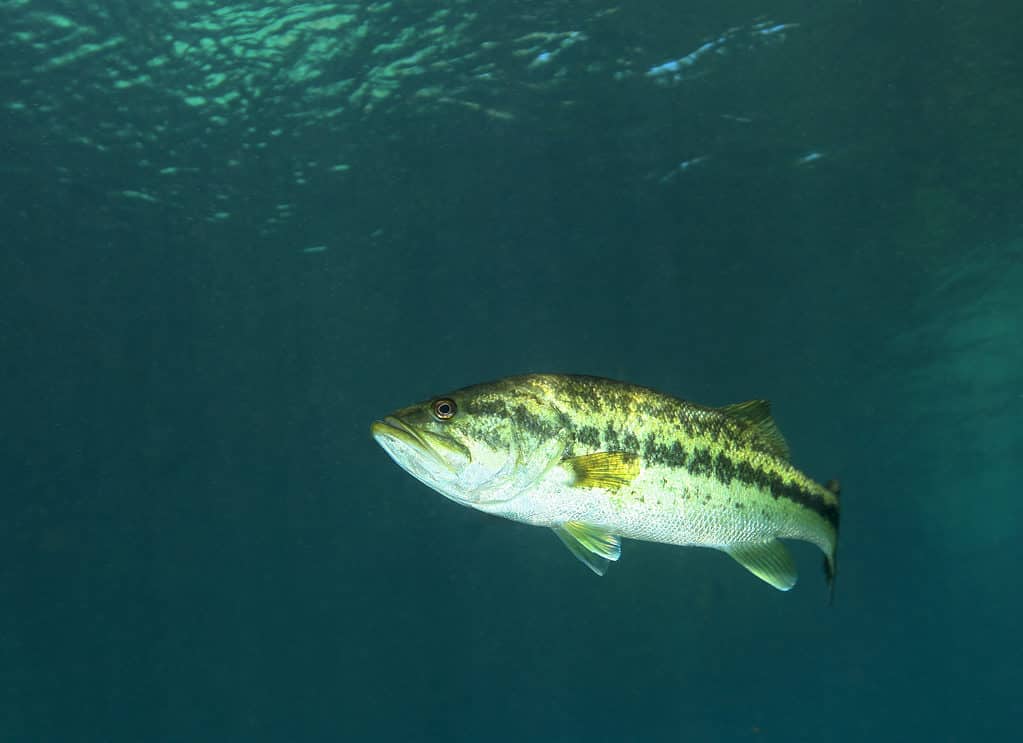
Largemouth bass has a distinctive appearance with a dark olive-green hue on their backs and light green sides that fade into a pure white belly.
©iStock.com/mpwoodib
The Micropterus salmoides, commonly known as largemouth bass, is a carnivorous species of freshwater gamefish. In 1974, Mississippi officially recognized the largemouth bass as its state fish due to its crucial role in the state’s history. Known for its fierce fighting spirit, this species has long been a favorite among avid fishermen.
Appearance
Largemouth bass has a distinctive appearance with a dark olive green hue on their backs and light green sides that fade into a pure white belly. They also feature a distinct dark-mottled band running along their sides. The largemouth bass is typically around 16 inches long.
Behavior
Young largemouth bass travel in schools, but as they mature, they tend to be solitary creatures. On rare occasions, a group of largemouth bass may gather in a small area, but they do not socialize. This species uses vegetation, roots, and limbs as hiding places to ambush their prey.
Characteristics
Largemouth bass inhabit various freshwater environments, including lakes, streams, ponds, and rivers worldwide. They are drawn to bodies of water with an abundance of vegetation, especially stagnant ones. As the top predator in their habitats, largemouth bass are formidable hunters, but they can fall prey to other predators when they are young.
Interesting Facts
- Largemouth bass can consume prey that is up to 35% of their body length.
- The average lifespan of this species is between 10 to 16 years.
- They primarily rely on their sense of smell to ambush and attack prey.
Insect – Western Honeybee
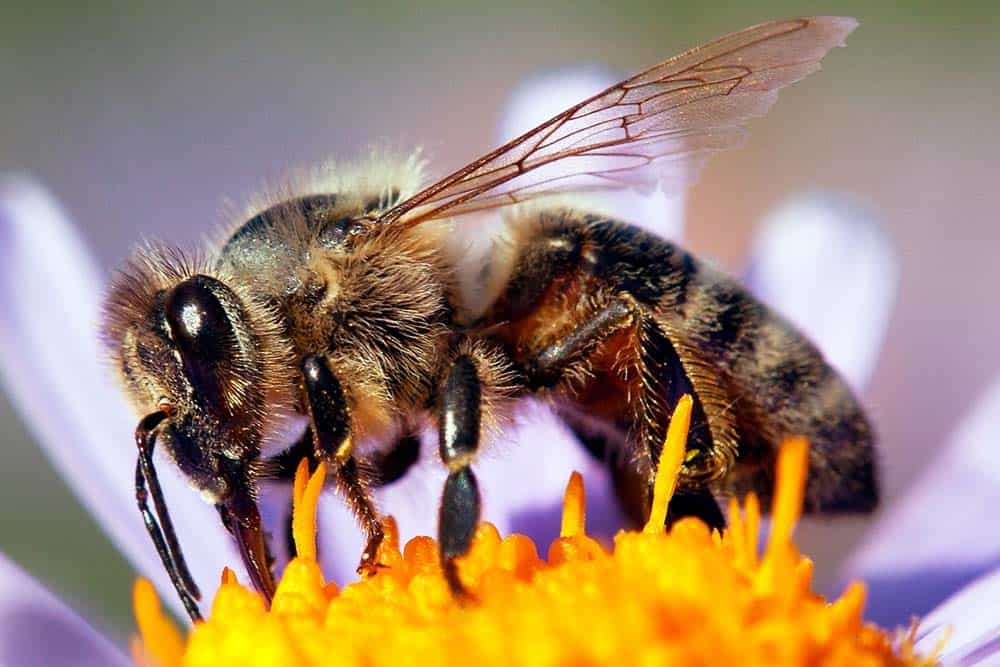
Western honeybees share a long history with the Mississippi people, who appreciate their role in producing honey and other valuable products.
©Daniel Prudek/Shutterstock.com
The western honeybee is scientifically known as Apis mellifera. It is the most widespread species of honeybee in the state and holds the distinction of Mississippi’s official insect. The western honeybee gained its title in 1980 due to its importance as a pollinator of crops and other plants in the state. Furthermore, the honeybee plays a crucial role in producing food and other agricultural products, making it a symbol of the state’s agricultural heritage and economic prosperity. Western honeybees share a long history with the Mississippi people, who appreciate their role in producing honey and other valuable products.
Appearance
The western honey bee displays a degree of color variation, with a typical appearance of brown and a striped abdomen of dull yellow and brown. Their thorax, abdomen, and head are densely covered in hair, with their legs and the area around their eyes also sporting a hairy appearance.
The western honey bee is a small insect, measuring less than an inch in length.
Behavior
In a typical colony of Western honey bees, the vast majority of individuals are sterile female workers. Reproductive duties, including mating and egg-laying, are reserved for the queen bee. Usually, only one queen, responsible for reproduction, is present in a hive.
Characteristics
In regions with temperate climates, honey bee colonies accumulate stores of honey and pollen to sustain them through the winter months. To combat the cold, workers and the queen bee form a compact cluster, using their flight muscles to produce heat and maintain warmth.
Interesting Facts
- A honeybee can fly at speeds of up to 15 mph.
- A single honeybee worker produces an average of just 1/12 of a teaspoon of honey in its lifetime.
- A pound of honey requires two million flower visits.
Marine Mammal – Bottlenose Dolphin

A dolphin produces high-pitched clicks, which function as an echolocation system, much like sonar.
©Sbork / Creative Commons – Original
The bottlenose dolphin (Tursiops truncatus) is a sleek and intelligent mammal commonly present in the oceans globally. The bottlenose dolphin became the state marine mammal of Mississippi in 1974 to recognize its significance as an important and beloved species in the state’s coastal waters and to raise awareness about the importance of protecting and preserving dolphins and their habitats.
Appearance
The name “bottlenose” comes from the distinctive, stubby snout that characterizes these dolphins. Their hue can vary from light gray to nearly black on their dorsal side, whereas their ventral region is typically a shade of gray that approaches white. They are typically between 6 to 13 feet in length.
Behavior
Bottlenose dolphins are social and exuberant, building long-lasting friendships that can endure for several decades. These mammals hunt, mate, and protect each other in social groups. They have a fondness for riding the waves, swimming in the wakes of boats, and playing in self-created bubble rings.
Characteristics
Every bottlenose dolphin has a unique whistle that develops shortly after birth, serving as a means of identification, similar to a human name. Additionally, these mammals produce high-pitched clicks, which function as an echolocation system, much like sonar.
Interesting Facts
- The brain of a dolphin is larger than that of a human.
- Dolphins consume 15-30 pounds of food daily.
- They have an almost 360-degree field of vision.
Butterfly – Spicebush Swallowtail
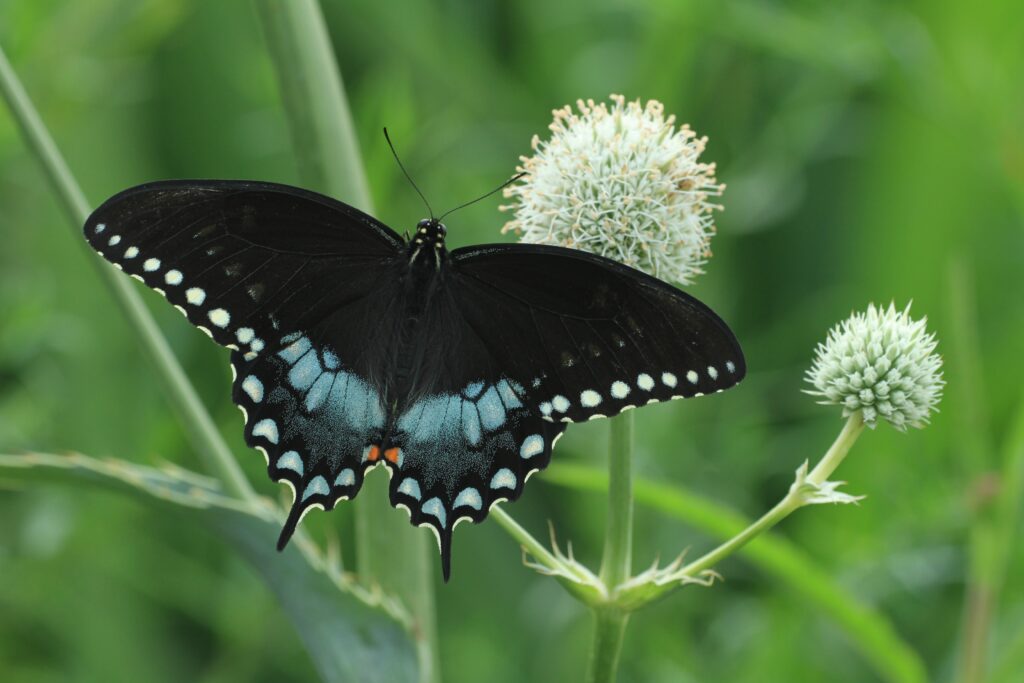
In Mississippi, the Papilio troilus, also known as the spicebush swallowtail, is recognized as the state
butterfly
.
©Kevin Collison/Shutterstock.com
In Mississippi, the Papilio troilus, also known as the spicebush swallowtail, is recognized as the state butterfly. Mississippi officially declared the spicebush swallowtail the state butterfly of Mississippi in 1991. This species is abundant throughout the state and is the most prevalent type of swallowtail. Its designation as the state butterfly recognizes its significance and prevalence in the area.
Appearance
The Papilio troilus has a black base color with distinct ivory markings. Its hindwings feature distinctive tails and eye-catching orange spots. The female possesses a radiant bluish sheen, while the male boasts a bluish-green iridescence due to its unique scales.
The spicebush swallowtail typically measures between 3.5 to 4.5 inches in length.
Behavior
These butterflies inhabit temperate regions, where they live in various habitats, including grasslands, savannas, forests, marshes, bogs, swamps, and agricultural areas. The larvae of this species are abundant in deciduous woodlands, while the adult butterflies flit about the surrounding landscape.
In addition to these areas, the spicebush swallowtail can also inhabit roadside areas, parks, and shaded regions within woods.
Characteristics
During the larval stage, these butterflies feed on the leaves and shrubs of host trees with an aromatic quality. As adults, the spicebush swallowtails, like other butterflies, feed on nectar, preferring flowers such as honeysuckle, thistle, and clover.
Interesting Facts
- Adults of the spicebush swallowtail have a brief lifespan, lasting anywhere from two to 14 days.
- Their slow flight makes them easy targets for predators.
- They often gather in groups near riverbanks and moist areas.
Waterfowl – Wood Duck
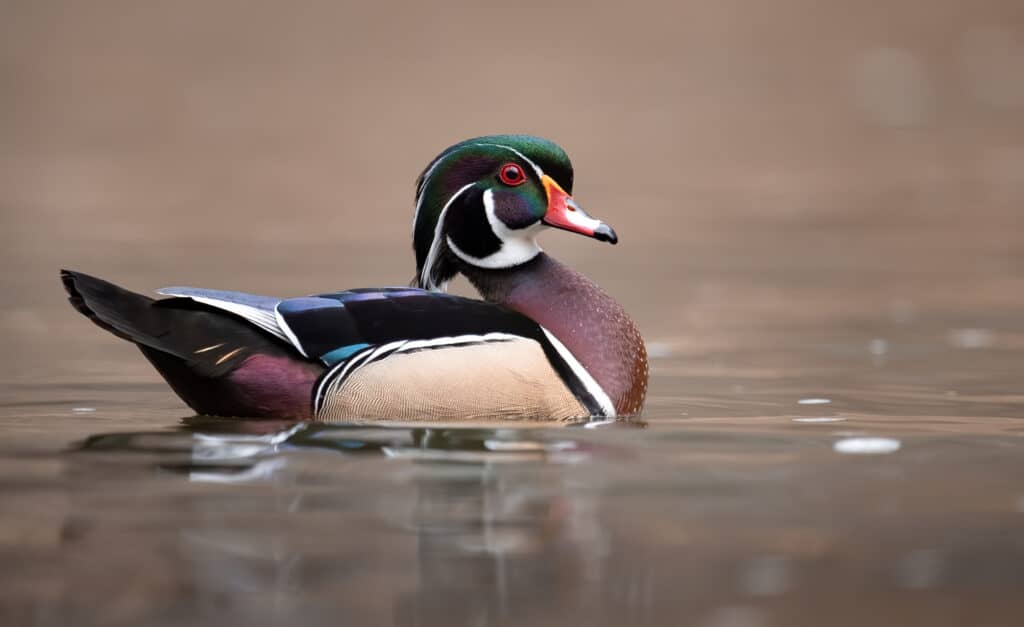
The wood duck is distinguishable among its duck relatives by its fabulous crest, which gives it a boxy head shape, paired with a slender neck.
©Harry Collins Photography/Shutterstock.com
The North American perching duck, commonly referred to as the wood duck or scientifically known as Aix sponsa, is a state waterfowl in Mississippi. The wood duck holds the distinction of being one of the three waterfowl species that breed in the state annually. Not too long ago, the wood duck faced near extinction in Mississippi due to habitat destruction and excessive hunting. To raise awareness and protect this species, the state declared it the state waterfowl in 1974, symbolizing Mississippi’s dedication to conservation efforts.
Appearance
The wood duck is distinguishable among its duck relatives by its fabulous crest, which gives it a boxy head shape, paired with a slender neck. When in flight, they hold their head high with occasional head nods. This duck has a long body, short wings, and a broad tail. The wood duck measures approximately 19 inches in length.
Behavior
As diurnal birds, wood ducks spend their nights sleeping on the water, except for female ducks with ducklings. Their feeding habits include both dabbling, where they hunt for food at the water’s surface, as well as foraging on land. These birds tend to be social and flock together in the evening hours. During migration, they travel in either small groups or in pairs.
Characteristics
The mating season for wood ducks begins in January, with most birds that reach the breeding grounds in spring already having found a mate. This species is unique among North American ducks, as it is the only one to regularly produce two broods in a single year.
Interesting Facts
- Wood ducks favor habitats that include both water and forest areas.
- The male wood duck attracts female mates with a high-pitched, squeaky whistle call.
- Their diet changes and adapts throughout the different stages of their life.
Shell – Eastern Oyster

Oysters reproduce in warmer water temperatures and switch genders one or more times during their lifespan!
©Pix Box/Shutterstock.com
The Crassostrea virginica, or the eastern oyster, is a true oyster in the eastern regions of North and South America. This species holds the title of the official state shell of Mississippi. The eastern oyster gained its title in 1974 due to its ecological significance to the state. Oysters were once abundant in the waters surrounding Mississippi and played a crucial role in the state’s economy and ecology. Oyster reefs provided habitat for various aquatic species and served as natural breakwaters, helping to protect the shoreline from erosion.
Appearance
The eastern oyster species typically reach lengths of 3 to 5 inches, although it can grow up to 8 inches in some cases. It has a soft body encased by two rough shells, which may range in color from gray to white or tan. The top shell is flat, while the bottom shell is concave, featuring a purple muscle scar on its interior.
Behavior
Eastern oysters sustain themselves by filtering algae and other nutrient-rich particles from the water constantly flowing over their gills. They reproduce in warmer water temperatures through broadcast spawning and switch genders one or more times during their lifespan!
Characteristics
They thrive in brackish and salty waters, inhabiting depths ranging from 8 to 35 feet. In warmer climates, they can reside in the intertidal zone and tend to congregate on sturdy substrates, linking together to form reefs.
Interesting Facts
- Oysters, like fish, possess gills and utilize them for breathing.
- A female oyster can release over 100 million eggs during a single spawning event.
- An individual adult oyster can clean up to 50 gallons of water per day through filtration.
Summary of the 10 Official State Animals of Mississippi
| Official title | Animal | |
|---|---|---|
| 1 | State Reptile | American Alligator |
| 2 | State Land Mammal #1 | White-Tailed Deer |
| 3 | State Land Mammal #2 | Red Fox |
| 4 | State Bird | Northern Mockingbird |
| 5 | State Fish | Largemouth Bass |
| 6 | State Insect | Western Honeybee |
| 7 | State Marine Mammal | Bottlenose Dolphin |
| 8 | State Butterfly | Spicebush Swallowtail |
| 9 | State Waterfowl | Wood Duck |
| 10 | State Shell | Eastern Oyster |
The photo featured at the top of this post is © timyee/Shutterstock.com
Thank you for reading! Have some feedback for us? Contact the AZ Animals editorial team.







